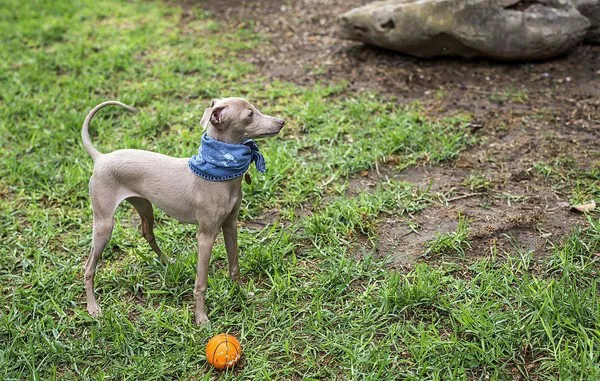Foxhounds are beautiful, athletic dogs originally bred for hunting, making them naturally energetic and lively. They have a long history as pack animals that chased prey over long distances, and as a result, they possess high stamina and enthusiasm for activity. Today, foxhounds can make fantastic family pets, but their energy levels, drive, and exercise needs are much higher than average. For prospective foxhound owners or those already sharing life with one, understanding how much exercise a foxhound needs is crucial for keeping this active breed happy and healthy.
In this article, we’ll cover the exercise needs of foxhounds, exploring their history, breed traits, types of exercise suitable for them, and tips for helping these high-energy dogs lead balanced lives.
Understanding the Foxhound Breed
Foxhounds were developed in England as hunting dogs that could keep up with horses and riders over vast stretches of countryside. There are two main types of foxhounds: the American Foxhound and the English Foxhound. Both are similar in terms of temperament and exercise requirements, although the American Foxhound is slightly lighter and faster, while the English Foxhound has a sturdier build. These dogs were bred to be independent, tenacious, and work well in packs, which is reflected in their social, intelligent, and energetic personalities.
Key Characteristics of Foxhounds
High Energy Levels: Foxhounds were bred to run long distances, so they have extremely high energy levels and stamina. Their bodies are built for endurance, and they have a strong drive to keep going for hours, especially when they catch a scent.
Intelligent and Curious: They have a highly developed sense of smell and are naturally curious, often getting easily distracted by scents around them. They also have a strong prey drive, which can lead them to chase after animals or follow a trail with great determination.
Social and Pack-Oriented: These dogs do best with regular interaction, whether it’s with humans, other dogs, or both. Their pack mentality can make them eager to be part of family activities.
Independent Streak: Foxhounds can be stubborn and may not always come when called if something more interesting catches their attention. This means exercise routines should include some mental stimulation and training to keep them engaged.
How Much Exercise Does a Foxhound Need?
Most foxhounds require about 1.5 to 2 hours of exercise daily, though some may need even more, depending on their individual energy levels. Without adequate physical and mental stimulation, foxhounds may become bored, which can lead to destructive behaviors such as chewing, digging, or excessive barking.
Here’s a breakdown of what that exercise should look like:
1. Daily Walks (30 to 60 Minutes Each)
Foxhounds benefit from at least one long walk or two shorter walks each day. For a foxhound, a brisk 30 to 60-minute walk allows them to stretch their legs and enjoy the outdoors. Since they love to explore with their noses, walks on a leash can be full of sniffing and new scents. Walks on trails or paths with varied scenery can help stimulate their senses and prevent boredom.
Tips for Walking Your Foxhound:
Leash Training: Since foxhounds have a strong prey drive, always use a leash or a secure harness when walking them. They can get easily distracted and might pull hard if they catch an interesting scent.
Rotating Routes: Try varying your walking routes. Foxhounds appreciate new environments where they can explore fresh smells and see different sights.
2. Off-Leash Running (30 Minutes to 1 Hour)
To truly let off steam, foxhounds benefit from off-leash running. If you have access to a secure, fenced area, like a dog park or a large backyard, allowing your foxhound to run freely for at least 30 minutes a few times a week is ideal. They can sprint, play with other dogs, and experience the joy of running without restraint, mimicking their natural hunting behaviors.
Safety Tips for Off-Leash Time:
Secure Area: Because of their high prey drive, foxhounds can be prone to escaping if they find a gap in a fence. Always ensure the area is securely fenced.
Recall Training: Work on recall commands, like “come” and “stay.” Although foxhounds are known for selective hearing when excited, training them early on with these commands can reduce the risk of them wandering off.
3. Scent Games and Mental Stimulation (15 to 30 Minutes)
Mental stimulation is essential for keeping a foxhound’s mind sharp. Since they have an exceptional sense of smell, scent games are perfect for them. These activities involve hiding treats or toys around the house or yard, letting them find each item by following their nose. Interactive puzzle toys or scent training can also keep them mentally engaged and burn off extra energy.
Ideas for Scent Games:
Hide-and-Seek: Hide treats around the yard or house and encourage your foxhound to search for them.
Scent Training: Use scent-based training tools or participate in “nose work” classes designed for scent-driven dogs.
4. Agility Training and Obedience Work (30 Minutes)
Foxhounds do well with agility training, which combines physical exercise with mental focus. Training sessions should be fun and engaging, as foxhounds enjoy working but may lose interest if sessions are too repetitive. Agility courses can help improve their balance, coordination, and obedience skills. This type of training also allows for bonding time between you and your dog, reinforcing commands and helping them use their problem-solving skills.
5. Hiking and Outdoor Adventures (Once a Week for 1 to 2 Hours)
Since foxhounds were bred to cover long distances, they thrive on weekend hikes and adventures. Trails with hills, streams, and a variety of terrain allow foxhounds to experience a stimulating environment while burning energy. Hiking also provides a good opportunity for foxhounds to strengthen their endurance. They enjoy time spent in nature, where they can satisfy their urge to sniff, explore, and roam.
Precautions for Hiking:
Leash or Long Line: Since they may chase wildlife, it’s safest to keep them on a leash or a long line, especially if they aren’t well-trained off-leash.
Water and Breaks: Foxhounds have high stamina but still need water and breaks on longer hikes, especially in hot weather.
Signs Your Foxhound Is Getting Enough Exercise
It’s essential to watch for cues that your foxhound is getting the right amount of exercise. A well-exercised foxhound will typically be relaxed, content, and more responsive to training. Here are some signs:
Relaxed Behavior Indoors: If your foxhound can settle down calmly after exercise, this is a sign they are sufficiently stimulated.
Less Destructive Behavior: Foxhounds who are not getting enough exercise may engage in destructive behaviors like chewing furniture or digging. When well-exercised, these tendencies decrease.
Contentment with Quiet Time: A happy foxhound can enjoy downtime and be satisfied relaxing around the house after an active day.
Signs Your Foxhound Needs More Exercise
If a foxhound isn’t getting adequate exercise, it may show in various behaviors. Some signs include:
Restlessness and Pacing: When under-exercised, foxhounds might pace around the house or yard, indicating pent-up energy.
Frequent Barking or Howling: Vocalizations, especially at unusual times, can suggest boredom or frustration due to lack of exercise.
Destructive Behaviors: Chewing, digging, and other destructive activities can be common in under-stimulated foxhounds.
Difficulty Focusing: An under-exercised foxhound may struggle with training sessions, becoming easily distracted and restless.
How Age and Health Affect Exercise Needs
As foxhounds age, their exercise needs may change. Older foxhounds may not require as much intense activity but will still benefit from moderate exercise to keep their joints and muscles strong.
Puppies
Young foxhounds, especially under 18 months, have boundless energy but should avoid strenuous exercise until they’re fully grown. Their bones and joints are still developing, so it’s best to keep activities at a moderate level, focusing on socialization and shorter play sessions rather than long-distance runs.
Senior Foxhounds
For senior foxhounds, moderate walks and gentler exercise are ideal. While they may not keep up with long hikes, they still enjoy exploring and sniffing new areas. Shorter, more frequent walks and engaging in scent games can keep older foxhounds mentally and physically active.
Health Considerations
Like all breeds, foxhounds can develop health conditions, particularly hip dysplasia and joint issues due to their active lifestyles. When exercising a foxhound with any health issues, it’s essential to follow a vet’s advice. Avoid high-impact activities, and focus on low-impact exercises like swimming, which are gentler on the joints.
The Benefits of Proper Exercise for Foxhounds
Physical Health: Adequate exercise helps maintain a foxhound’s weight, keeping them lean and less prone to obesity-related health issues. It also supports cardiovascular health and muscle tone.
Mental Well-being: Engaging in activities like scent games and agility training keeps their minds sharp and prevents boredom, which can lead to anxiety or depression in dogs.
Behavioral Improvements: Well-exercised foxhounds are calmer, more obedient, and less likely to display unwanted behaviors. They’re better companions and easier to train when they receive enough mental and physical activity.
Stronger Bond with Owners: Regular exercise is a great way to build a strong bond between you and your foxhound. Whether it’s during walks, hikes, or playtime, spending active time together helps strengthen the trust and companionship between you and your dog.
Conclusion
Foxhounds are incredible dogs with a rich history of stamina, strength, and drive. Understanding how much exercise they need is essential for ensuring they remain healthy, happy, and well-behaved. The key to a well-adjusted foxhound is providing enough physical and mental stimulation to match their high energy levels.
A typical foxhound requires at least 1.5 to 2 hours of exercise per day, divided between walks, off-leash running, mental stimulation, and more adventurous activities like hiking or agility training. Adjust the intensity of their exercise depending on their age, health, and temperament. Regular exercise is not just about keeping them fit; it’s about providing an outlet for their natural instincts, curbing unwanted behaviors, and ensuring they live long, healthy lives as happy family members.
By understanding their exercise needs and committing to a well-rounded routine, foxhound owners can enjoy the full spectrum of what these remarkable dogs have to offer—loyalty, intelligence, and boundless energy—all while keeping their foxhounds satisfied and content in their home environment.
Related Topics:





















